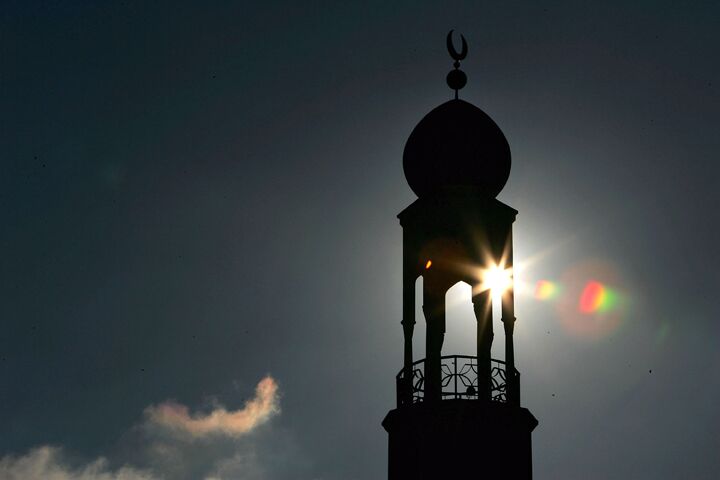
Cathedrals vs. Mosques: Tremors of a Coming Conflict
In the pristine alpine villages of Europe, a new type of silhouette is altering the low-lying skyline. Catholic cathedrals built in the Middle Ages are finding themselves competing with the outlines of the minarets of Muslim mosques.
Western Europe has a Muslim population of approximately 18 million, and Islam is Europe’s fastest-growing religion. This burgeoning European Islamic population has created a historically ironic juxtaposition: Minarets are rising right next to Europe’s age-old cathedrals.
In the highly Catholic regions of southern Germany, Switzerland and Austria, this trend is even now causing a clash of cultures.
In his farewell speech on September 28, outgoing Bavarian Premier Edmund Stoiber rallied thunderous applause when he tapped into the underlying anti-Muslim sentiment of many Germans and declared that mosques were becoming too numerous. “When the mosques in our cities are bigger than cathedrals and churches, then we must tell our Muslim fellow citizens: ‘No, that is going too far,’” he said. “Church towers, not minarets, should be what you see when you look out across the state.”
Germany has the second-largest Muslim population in Western Europe, and, judging from the applause, vast numbers of Bavarians enthusiastically support Stoiber when he tells Germany’s Muslims that they are “going too far.”
Yet more than just politicians are speaking out against the minarets.
Catholic clergy members are also taking a stand. German Cardinal Joachim Meisner expressed concern over plans for the building of an enormous mosque—complete with minarets reaching a height of 170 feet—next to the Cologne Cathedral.
Bishop Egon Kapellari of Graz, Austria, made an even more aggressive statement: “Muslims should not build mosques which dominate town’s skylines in countries like [Austria].”
The people of Austria and Bavaria are proud of their Catholic heritage—the pope is Bavarian after all—and they are concerned that Islam is becoming a growing competitive force in the region.
Why do Europeans dislike minarets? One answer to this question lies in a small Swiss village.
The Supreme Court of Switzerland just awarded the Muslim community in the village of Wangen the right to erect a 20-foot-high minaret. But the decision is hotly contested. Ulrich Schlüer, an MP for the right-wing Swiss People’s Party, has launched a crusade to stop the building of minarets in Switzerland and to keep his county culturally Christian. Schlüer organized a petition demanding that the Swiss Constitution be changed to prohibit the building of minarets on Swiss ground. He needs 100,000 signatures within a year in order to trigger a referendum. He already has 40,000.
Schlüer has stated that, “Unlike other religions, Islam is not only a religion. It’s an ideology aiming to create a different legal system. That’s sharia. That’s a big problem, and in a proper democracy it has to be tackled. If the politicians don’t, the people will.” He continued, “We’ve got nothing against prayer rooms or mosques for the Muslims, but a minaret is different. It’s got nothing to do with religion. It’s a symbol of political power.”
A “symbol of political power”—this is one reason why Europeans dislike minarets. The last thing Catholic Europe wants is Islamic political power encroaching on its own soil. Catholic Europeans in particular see the minarets as a threat to their Catholic culture and dangerous to their political control. Multitudes within Bavaria, Austria and Switzerland are starting to believe in Edmund Stoiber’s statements and are beginning to tell their Muslim neighbors, “No, that is going too far.”
The Germans, Austrians and Poles rallied to push back the Islamic invasion of Vienna by the Ottoman Empire in 1683. They are not about to allow the terrorist activities of radical Islam and building of minarets to transform Catholic Europe into an Islamic “Eurabia.”
Far-right Austrian politician Jörg Haider made it known that his province of Carinthia “will be a pioneer in the battle against radical Islam for the protection of our dominant Western culture.”
This conflict over minarets in Europe is just the beginning. The issue of growing Muslim power in Europe will only exacerbate existing tension between Catholics and Muslims. This trend—combined with radical Islamic terrorism and a belligerent Iranian “king of the Middle East”—will soon elicit a full-scale clash of civilizations (Daniel 11:40).
Trumpet editor in chief Gerald Flurry has stated that the “king of the south” spoken of by the Prophet Daniel will undoubtedly be Iranian-led radical Muslims. Their push against the “king of the north,” a resurrected Holy Roman Empire, will be the match that ignites blitzkrieg war against radical Islam by Catholic Europe.
This will be the last crusade before Jesus Christ returns to establish peace on Earth—forever.
